We asked orthopedic surgeons around the country what they felt would be one of the most important issues this upcoming year across the industry.
Ask an Orthopedic Surgeon is a weekly series of questions posed to orthopedic specialists around the country on business and clinical issues affecting the field of orthopedics. We invite all orthopedic surgeons to submit responses.
Next week's question: As an orthopedic surgeon, how has this winter affected you and/or your practice already?
Please submit responses to Nick Gaudio at ngaudio@beckershealthcare.com by Monday, Feb. 2, at 5 p.m. CST.
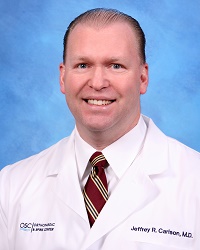 "2015 is the year of the deductible. Insurance plans have changed in 2015 with the individual and employer mandate causing adjustments in insurance coverage. Most patients will now have a deductible with any medical service. This has always been an issue for medical practice in January and February of each year. Patients begin each new year by paying down a deductible with their own money. This year, more insurance plans will have a deductible. Patients who have not previously had insurance will begin to learn that the insurance company that they have been paying a premium to will not start paying for their medical care until they have paid their portion of the deductible. Patients who have had previously been on 'zero deductible' plans will now be faced with out-of-pockets costs that they hadn't been paying before. This becomes especially important in the ASC facility. Patients and surgery centers will have to determine what the cost of a service will be in relation to the deductible. The plans may have varying percentage of expenses for outpatient surgeries, inpatient surgeries, free-standing surgery centers and those connected to a hospital. This will come as a surprise to many of our patients and may catch surgery centers off-guard with new plans changing as of Jan. 1. This may also affect the productivity of ASCs in the first quarter and increase the need for scrutiny of insurance plans of all of our patients."
"2015 is the year of the deductible. Insurance plans have changed in 2015 with the individual and employer mandate causing adjustments in insurance coverage. Most patients will now have a deductible with any medical service. This has always been an issue for medical practice in January and February of each year. Patients begin each new year by paying down a deductible with their own money. This year, more insurance plans will have a deductible. Patients who have not previously had insurance will begin to learn that the insurance company that they have been paying a premium to will not start paying for their medical care until they have paid their portion of the deductible. Patients who have had previously been on 'zero deductible' plans will now be faced with out-of-pockets costs that they hadn't been paying before. This becomes especially important in the ASC facility. Patients and surgery centers will have to determine what the cost of a service will be in relation to the deductible. The plans may have varying percentage of expenses for outpatient surgeries, inpatient surgeries, free-standing surgery centers and those connected to a hospital. This will come as a surprise to many of our patients and may catch surgery centers off-guard with new plans changing as of Jan. 1. This may also affect the productivity of ASCs in the first quarter and increase the need for scrutiny of insurance plans of all of our patients."
— Jeffrey R. Carlson, MD
Orthopaedic and Spine Center
Newport News, Va.
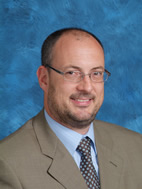 "There is an increasing amount of time spent on non-medical — and frequently unnecessary — activities. These include:
"There is an increasing amount of time spent on non-medical — and frequently unnecessary — activities. These include:
1) Correspondence with insurance companies, medical director and 'peer review' physicians whose only real goal is to make approving medical treatment as difficult and onerous as possible.
2) Electronic records, CPOE, PQRS and other so-called electronic measures which claim to improve our efficiency but only add uncompensated work time to an already busy day."
—Marc Samson, MD
Good Samaritan Hospital
Los Angeles
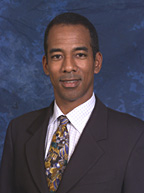 "The biggest issue facing orthopedic surgeons in the United States is the loss of ability to practice medicine freely in a private practice setting. Young surgeons entering the workforce face out-of-control startup costs and little ability to control costs or income from one year to the next. This results in a compromised doctor-patient relationship because many believe that they must generate income through a high-volume mode that does not allow them to care for the individual patient. Those who employ physicians often have little interest in the traditional doctor-patient relationship."
"The biggest issue facing orthopedic surgeons in the United States is the loss of ability to practice medicine freely in a private practice setting. Young surgeons entering the workforce face out-of-control startup costs and little ability to control costs or income from one year to the next. This results in a compromised doctor-patient relationship because many believe that they must generate income through a high-volume mode that does not allow them to care for the individual patient. Those who employ physicians often have little interest in the traditional doctor-patient relationship."
—William Long, MD
Orthopaedic Computer Surgery Institute
Los Angeles
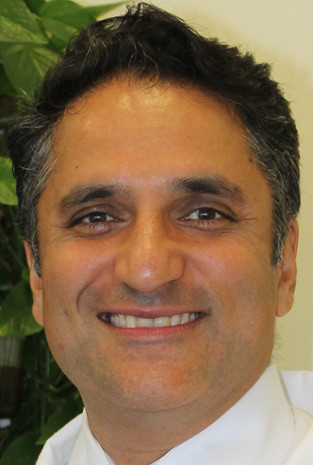 "The pressing issues in orthopedics today include providing the highest quality service at the most efficient cost for the healthcare system in general. Orthopaedic surgeons value their autonomy by nature. In this regard, around the nation many orthopedic surgeons have decided to undertake efforts to achieve this goal by joining together in large regional orthopedic groups. This allows for efficiencies on a business level, and, more importantly, a collaboration amongst clinicians to create best practices and monitor the outcomes associated with these practices. This will streamline current efficiencies and will prepare the orthopedic surgery groups to modify practice patterns to continue to provide cost effective excellent care in the future. We founded one such group, The Centers for Advanced Orthopaedics, to change the way care is delivered surrounding our Nation’s Capital."
"The pressing issues in orthopedics today include providing the highest quality service at the most efficient cost for the healthcare system in general. Orthopaedic surgeons value their autonomy by nature. In this regard, around the nation many orthopedic surgeons have decided to undertake efforts to achieve this goal by joining together in large regional orthopedic groups. This allows for efficiencies on a business level, and, more importantly, a collaboration amongst clinicians to create best practices and monitor the outcomes associated with these practices. This will streamline current efficiencies and will prepare the orthopedic surgery groups to modify practice patterns to continue to provide cost effective excellent care in the future. We founded one such group, The Centers for Advanced Orthopaedics, to change the way care is delivered surrounding our Nation’s Capital."
— Subir Jossan, MD
The Centers for Advanced Orthopaedics
Prince William Orthopaedics, Hand Surgery & Sports Medicine Center
Manassas, Va.
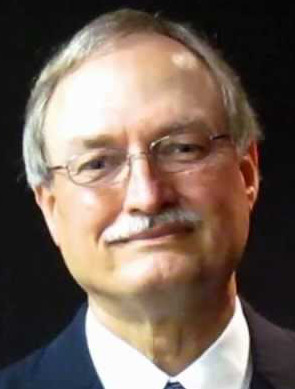 "The most pressing issue facing orthopedists in 2015 is the ability to adapt to the rapidly changing healthcare environment. The risk of falling short on performance-based measurements such as PQRS, VBPM and Meaningful Use in addition to the learning curve of ICD-10 can have negative implications to the surgeon and practice. Leveraging technology within the modern practice has become the key to evolving and surviving in this new landscape."
"The most pressing issue facing orthopedists in 2015 is the ability to adapt to the rapidly changing healthcare environment. The risk of falling short on performance-based measurements such as PQRS, VBPM and Meaningful Use in addition to the learning curve of ICD-10 can have negative implications to the surgeon and practice. Leveraging technology within the modern practice has become the key to evolving and surviving in this new landscape."
— Stephen S. Burkhart, MD
The San Antonio Orthopaedic Group
San Antonio, Texas
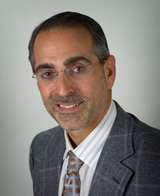 "The biggest issues facing orthopedic surgeons in 2015 are the challenges of the rapidly changing healthcare environment which include: increasing capital costs, lower reimbursements and increased data reporting requirements. Today, the orthopedic surgeon needs to be just as comfortable running a business as they do running the operating room. We would all prefer to focus our attention on what we do best, which is taking care of our patients, however, in order to successfully run our practices we need to deal with the 'business' of medicine."
"The biggest issues facing orthopedic surgeons in 2015 are the challenges of the rapidly changing healthcare environment which include: increasing capital costs, lower reimbursements and increased data reporting requirements. Today, the orthopedic surgeon needs to be just as comfortable running a business as they do running the operating room. We would all prefer to focus our attention on what we do best, which is taking care of our patients, however, in order to successfully run our practices we need to deal with the 'business' of medicine."
— Greg Tchejeyan, MD
Los Robles Hospital
Thousand Oaks, Calif.
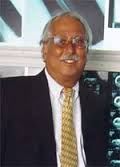 "The way that complex fracture repair is approached has been relatively unchanged for quite some time, with orthopedic surgeons facing a number of challenges regularly in the treatment of pathological and non-pathological fractures. I see a significant opportunity for innovation in the orthopedics market in 2015, as technologies are being explored to potentially reduce orthopedic surgery time and morbidity rates, as well as lessen complications and improve patient outcomes. This year, I am excited to be positioned to lead the first US trial of the IlluminOss Photodynamic Bone Stabilization System for the treatment of metastatic legions using the world's first minimally invasive, intramedullary, patient-conforming polymer implant. The procedure incorporates the use of a thin walled PET balloon that is infused with a liquid monomer and inserted into the intramedullary canal of the bone conforming to the shape of the patient's specific bone. The device forms as an implant once the surgeon activates the visible light delivered within the PET balloon. Once cured, the implant provides longitudinal strength and rotational stability over the length of the implant. This approach to fracture repair — which has already been effectively used in the treatment of over 700 patients to date internationally, where it has been approved for clinical applications under a CE Mark since 2010 — could be a true disruptive technology for the treatment of fractures worldwide and may decrease procedure, recovery and healing time. Potentially, this technology could allow surgeons greater freedom of surgical approach and allow the patient to get back to daily activities more quickly without the hindrance of a hard cast."
"The way that complex fracture repair is approached has been relatively unchanged for quite some time, with orthopedic surgeons facing a number of challenges regularly in the treatment of pathological and non-pathological fractures. I see a significant opportunity for innovation in the orthopedics market in 2015, as technologies are being explored to potentially reduce orthopedic surgery time and morbidity rates, as well as lessen complications and improve patient outcomes. This year, I am excited to be positioned to lead the first US trial of the IlluminOss Photodynamic Bone Stabilization System for the treatment of metastatic legions using the world's first minimally invasive, intramedullary, patient-conforming polymer implant. The procedure incorporates the use of a thin walled PET balloon that is infused with a liquid monomer and inserted into the intramedullary canal of the bone conforming to the shape of the patient's specific bone. The device forms as an implant once the surgeon activates the visible light delivered within the PET balloon. Once cured, the implant provides longitudinal strength and rotational stability over the length of the implant. This approach to fracture repair — which has already been effectively used in the treatment of over 700 patients to date internationally, where it has been approved for clinical applications under a CE Mark since 2010 — could be a true disruptive technology for the treatment of fractures worldwide and may decrease procedure, recovery and healing time. Potentially, this technology could allow surgeons greater freedom of surgical approach and allow the patient to get back to daily activities more quickly without the hindrance of a hard cast."
—Martin Malawer, MD
Professor of orthopedic surgery, Georgetown University
Washington, DC


